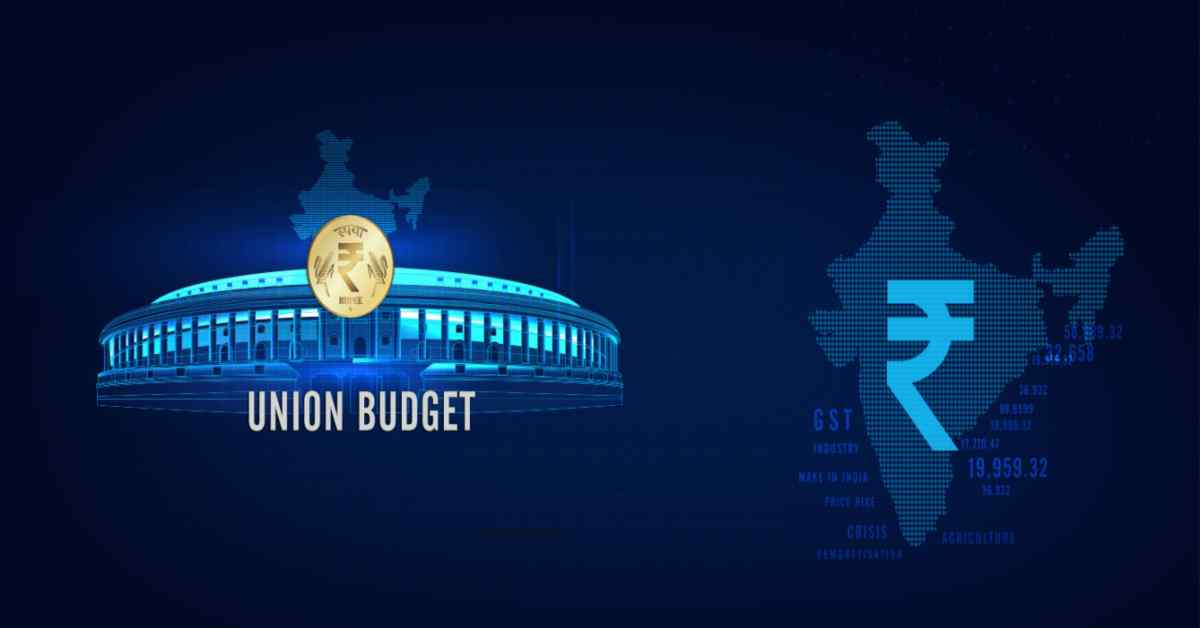Table of Contents
Quality Service Guarantee Or Painting Free

Get a rental agreement with doorstep delivery

Find the BEST deals and get unbelievable DISCOUNTS directly from builders!

5-Star rated painters, premium paints and services at the BEST PRICES!
Loved what you read? Share it with others!


Submit the Form to Unlock the Best Deals Today
Check Your Eligibility Instantly

Experience The NoBrokerHood Difference!
Set up a demo for the entire community
The Impact of Yearly Budget 2025-24 on Middle Class [A Comprehensive Analysis]
Table of Contents
The NoBroker Owners Club recently organised an exclusive event featuring a financial expert who delved into the potential impact of the Union Budget 2023-24 on the middle class.
The event aimed to equip club members with in-depth knowledge and insights into the implications of the budget on their finances, particularly those belonging to the middle-class bracket.
The expert shed light on the various aspects of the budget that are likely to affect middle-class taxpayers, ranging from changes in tax slabs to the introduction of new policies, and much more.
Quality Service Guarantee Or Painting Free

Get a rental agreement with doorstep delivery

Find the BEST deals and get unbelievable DISCOUNTS directly from builders!

5-Star rated painters, premium paints and services at the BEST PRICES!
The Budget 2023: An Overview

Budget 2023 is focused on driving growth through capital expenditure and promoting trust-based governance. The government aims to invest in transport connectivity and green projects, which will create new opportunities for the private sector and boost demand.
The budget also provides much-needed relief to taxpayers through a proposed tax slab under personal tax, by aiming to provide a stable and predictable tax regime, promoting voluntary compliance, and reducing litigation. With these measures, the Government hopes to sustain growth in the short and medium term and fuel India's aspirations as we commence our journey towards India@100.
Old Tax Regime Vs New (Proposed) Tax Regime
| Old Regime [Tax Slabs] | Tax Rates | New Regime [Tax Slabs] | Tax Rates |
| Up to INR 2,50,000 | N/A | Up to INR 3,00,000 | N/A |
| INR 2,50,000 to INR 5,00,000 | 5% | INR 3,00,000 to INR 6,00,000 | 5% |
| INR 5,00,000 to INR 7,50,000 | 10% | INR 6,00,000 to INR 9,00,000 | 10% |
| INR 7.50,000 to INR 10,00,000 | 15% | INR 9,00,000 to INR 12,00,000 | 15% |
| Above INR 10,00,000 | 20% | INR 12,00,000 to INR 15,00,000 | 20% |
| Above INR 15,00,000 | 30% |
Key Takeaways Under Personal Tax in Budget 2023

- New Option for Taxpayers: The (Concessional Tax Regime) CTR has been regarded as the default tax regime, while an option to consider the existing tax regime will be available. This move is expected to simplify the tax filing process and make it more accessible for taxpayers
- Enhanced Exemption Limit: The basic exemption limit has been enhanced to INR 3 lakhs from the existing limit of INR 2.5 lakhs.
- Standard Deduction Introduction: The introduction of standard deduction of INR 50,000 will be available on salary/ pension.
- Simplified Family Pension Taxation: INR 15,000 from family pension under CTR is a significant step towards simplifying the tax filing process and making it more transparent.
- Reduced Maximum Surcharge Rate: The maximum surcharge rate has been reduced from 37% to 25% in case of taxpayers having taxable income exceeding INR 5Cr.
Deductions and Exemptions

- Leave Encashment Limit Increased: The limit for leave encashment has been raised from INR 3 Lakhs to INR 25 lakhs.
- Taxable Insurance Income: Income from insurance policies issued on or after 01 April 2023 (excluding unit-linked policies) with a premium exceeding INR 5 lakhs per year will be taxable, except in the case of death.
- Capped Capital Gain Exemption: The capital gain exemption under sections 54 and 54F is now capped at INR 10 crores if the capital gain/net consideration is reinvested in a residential house.
- Enhanced Rebate Limit: The rebate limit under Section 87A has been increased from INR 5 lakhs to INR 7 lakhs.
- Double Deduction Rule Removed: Home loan interest will no longer be eligible for double deduction to prevent double taxation upon property transfer. This rule applies to both individual and non-individual taxpayers.
- TDS for Non-PAN Cases: Non-PAN cases will be subject to a 20% TDS when withdrawing from EPF PF balances, replacing the earlier practice of applying the MMR.
- No Capital Gains Transfer: Converting physical gold to EGR and vice versa will not be considered a capital gains transfer. The holding period and cost of acquisition of EGR/gold will include the gold prior to conversion/EGR.
- Deemed Income for Non-Ordinarily Residents: Beginning April 1, 2023, any resident giving over INR 50,000 to a not-ordinarily resident will be deemed as income arising in India to ensure parity with non-resident recipients.
Impact of Budget 2023 on Indian Real Estate Sector

One of the key highlights is the significant increase in the outlay for the Pradhan Mantri Aawas Yojana (PMAY) by 66%, amounting to INR 79,000 crores. This increase in the outlay will provide a major boost to affordable housing initiatives and help to fulfil the government's vision of "Housing for All" by 2022.
The PMAY scheme aims to provide affordable housing to urban and rural poor, economically weaker sections, and middle-income groups. The scheme will help in creating job opportunities in the construction and allied industries.
- Repayment of debt by REITs/ InVITs
Previously, the non-taxability of repayment of debt was an incentive for many sponsors and unitholders. However, going forward, distributions by REITs and InVITs in repayment of debt will be taxable in the hands of unit holders as “income from other sources' '. This change will apply from FY 2023-24 and in subsequent years.
This change means that any foreign investor receiving the distribution of repayment of debt will now be taxed at 40 percent plus surcharge. While this may discourage some foreign investment, it is important to note that this change will help bring in more tax revenue for the country.
- Cap on set-off of long-term capital gains
Previously, the set-off of long-term capital gains arising from the sale of a residential unit or any other long-term asset was not capped. However, under the new proposal, the set-off of long-term capital gains by way of investment in another residential unit will now be capped at INR 10 crores.
This change means that high net individuals (HNIs) who engage in high-value transactions involving the sale of a residential unit or any other long-term asset may be impacted. They will no longer be able to offset unlimited long-term capital gains by way of investment in another residential unit. While this may be seen as a disadvantage for some HNIs, it is important to note that this change will help bring in more tax revenue for the country.
- Exclusion of interest paid on property acquisition when computing capital gains
Under this proposal, if the interest cost is already claimed as a deduction under income from residential property, it will not be considered as a cost when computing capital gains on the sale of the property. This change is intended to mitigate the double deduction of interest expense.
This change will help provide clarity and consistency in tax laws and will ultimately benefit taxpayers. It will also help to prevent the double deduction of interest expenses, which was previously a concern.
The Indian Budget 2023 was presented with a vision for an empowered and inclusive economy, and it aimed to strengthen India's economic status. The capital investment outlay was increased by 33% to INR 10 lakh crore, and effective capital expenditure was targeted at 4.5% of GDP.
The taxation limit for small businesses and professionals was increased, bringing relief to the middle-class taxpayer. The proposed fiscal deficit for FY 2023-24 was 5.9 % of GDP, towards achieving the 4.5 % target by FY 2025-26.
FAQs
India's GDP growth (in real terms) is projected to be in the 6 to 6.8 % range for the fiscal year 2023-24, as per an article on India Briefing. The projection of India's FY24 GDP growth is higher than the 6.1 % estimate of the International Monetary Fund (IMF) but will depend on the trajectory of economic factors.
The Indian government has decided to increase its capital expenditure by 33% to 10 trillion rupees ($122.29 billion) in the next fiscal year. The focus will be on creating jobs and infrastructure development.
The seven priorities, termed Saptarishi, adopted in the Indian Budget 2023 are: inclusive development, reaching the last mile, infrastructure and investment, unleashing the potential, green growth, youth power, and financial sector. These priorities aim to guide the country towards an empowered and inclusive economy.
The key things to watch out for in the Indian Budget 2023 are income tax-related proposals, fiscal deficit, disinvestment target, FY24 capital expenditure plans, and any announcements on millets.
The Indian Government has adopted seven priorities, termed Saptarishi, in the Indian Budget 2023 to guide the country towards an empowered and inclusive economy. These priorities include inclusive development, reaching the last mile, infrastructure and investment, unleashing potential, green growth, youth power, and the financial sector.
Loved what you read? Share it with others!
Most Viewed Articles

Secrets to Unlock Before Buying Your Dream Apartment
June 15, 2023
3676+ views

Unlocking the World of Digital Assets: A Guide to Cryptocurrency and NFTs
March 21, 2023
2419+ views

Unlocking IPO Potential: Strategies for Maximising Returns
June 13, 2023
2299+ views

The Connection Between Home Design and Insomnia – Tips for Real Estate Homeowners
March 21, 2023
2126+ views

Inspiring Ideas for Transforming Your Space: A Structured Guide to Remodelling Your Home
June 16, 2023
2064+ views
Recent blogs in
The Impact of Yearly Budget 2025-24 on Middle Class [A Comprehensive Analysis]
January 31, 2025 by NoBroker.com
Understanding the Tenant Selection Process
June 16, 2023 by NoBroker.com
The Healing Power of Homoeopathy: A Gentle and Safe Approach to Wellness
June 16, 2023 by NoBroker.com





Join the conversation!